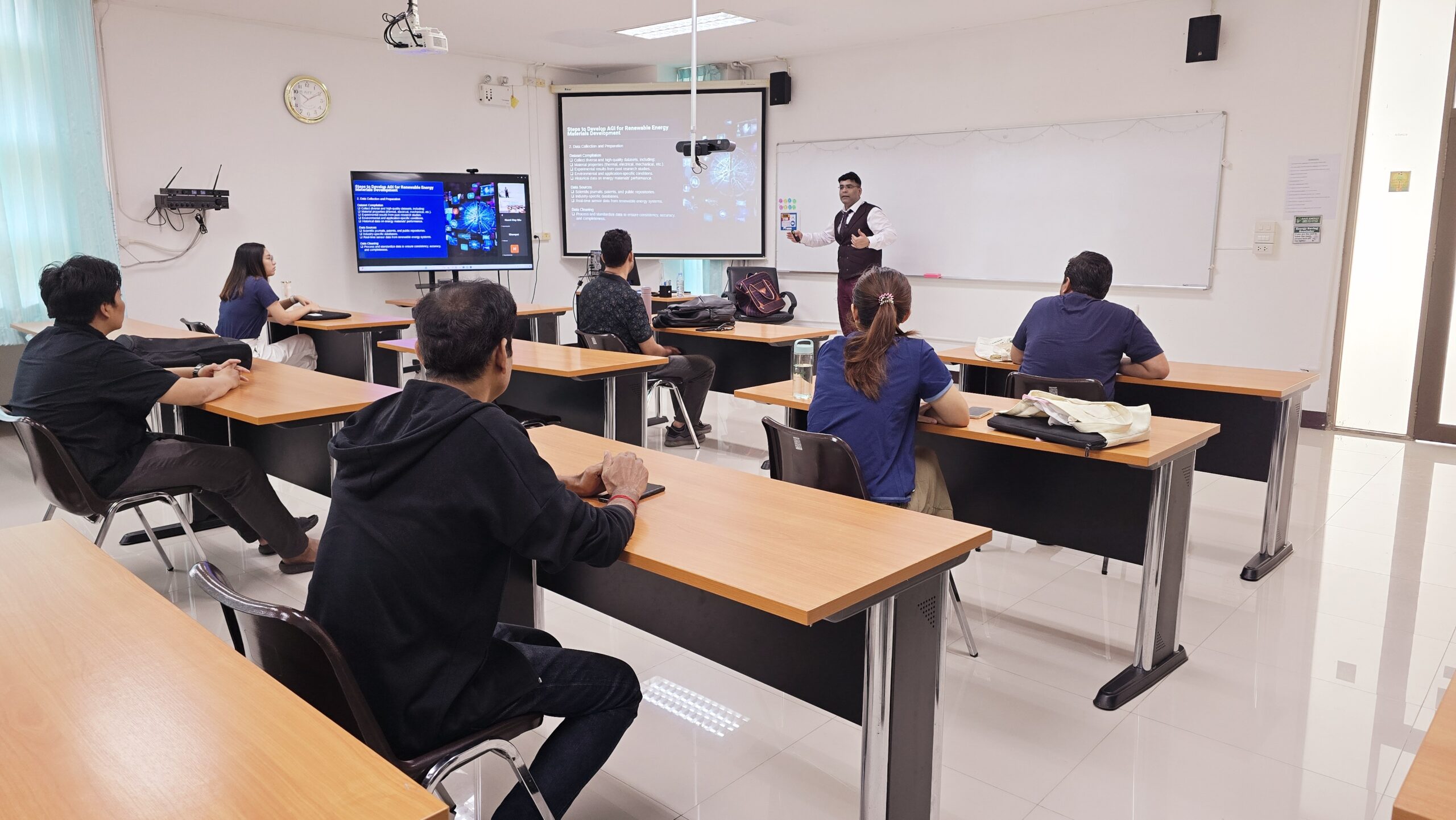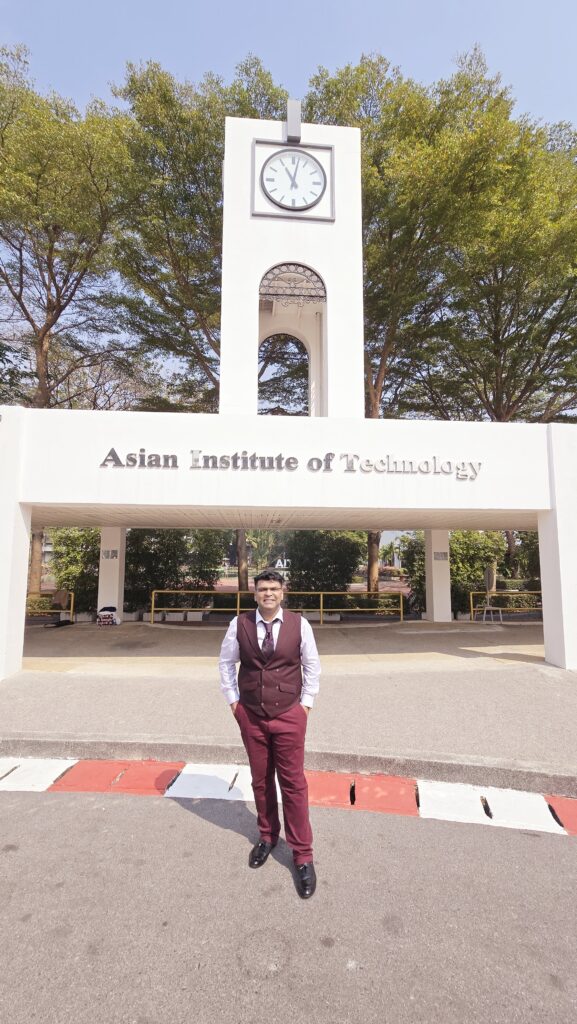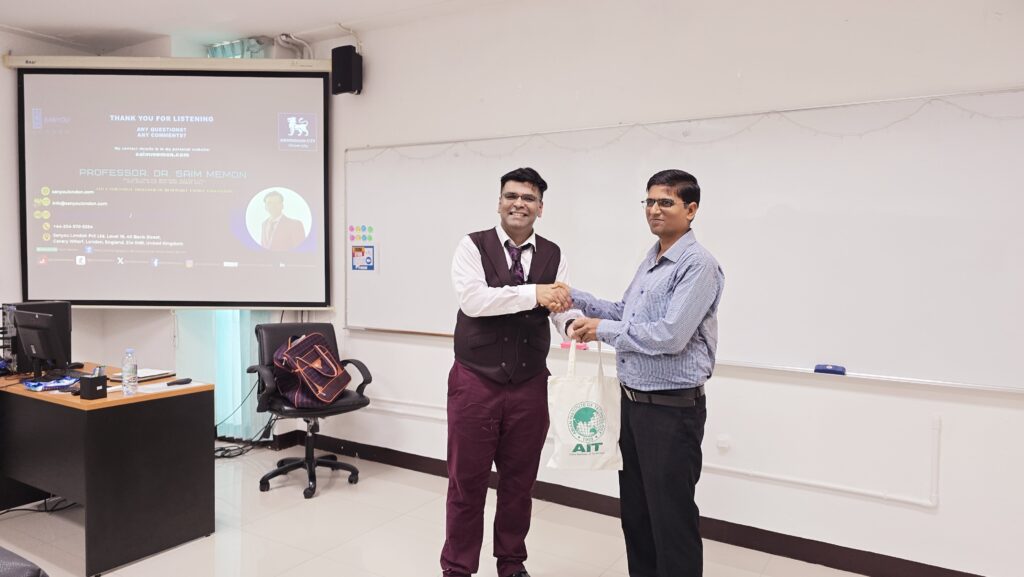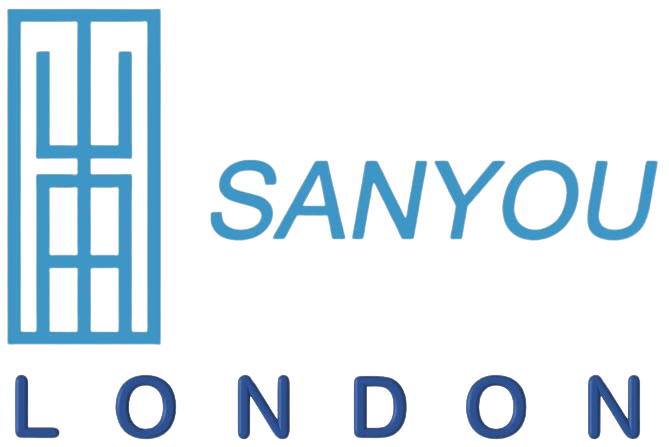
AIT Thailand 2025: Bridging Research and Industry for Real-World Energy Savings
Venue: Department of Energy and Climate Change, Asian Institute of Technology (AIT), Pathum Thani, Thailand
Presenter: Professor Saim Memon, CEO of Sanyou London
What happened?
Professor Saim Memon returned to AIT’s Department of Energy and Climate Change to deliver an industry-focused presentation on Bridging Research and Industry: What is the Value of Research in 2025. The session explored how universities and companies can turn ideas into tangible products that reduce energy use and support net-zero goals.
Why talk about “value of research” now?
Budgets are tight and expectations are higher. GenAI is powerful, but stakeholders need value for money—evidence that research becomes manufacturable products, deployable at scale, with measurable outcomes (lower bills, lower carbon, better comfort). That requires:
- Clear translation pathways (from idea → R&D → prototypes → compliance → market).
- Robust technical files and performance data that procurement teams can trust.
- Feedback loops from field pilots into design and manufacturing.
What did the presentation show?
From idea to industry: Professor Memon charted the journey from concept to mass production of vacuum-insulation energy technologies at Sanyou London—solutions designed to cut heat loss through walls and other fabric elements with millimetre-scale thickness:
- Vacuum Insulated Wallpaper (VIW): ultra-slim internal wall insulation for occupied homes, schools and offices—fast to install, space-saving, and suited to room-by-room retrofit.
- Decorative Integrated VIP (DVIP): durable external wall solution with architectural finishes for façades and modular units.
- VIP formats and accessories: closing thermal bridges around reveals and services; VIBB for passive hot/cold logistics in healthcare and food systems.
How does GenAI help, realistically?
- Faster materials exploration: surrogate models narrow viable layer stacks before physical trials.
- Quality and yield: anomaly detection in manufacturing supports consistent output at scale.
- Evidence at handover: data pipelines convert site measurements into decision-ready metrics for estates teams.
Why is this relevant to Thailand?
In hot-humid climates, cooling loads dominate. Thin, high-resistance insulation reduces heat ingress, flattens HVAC peaks and improves occupant comfort—vital where deep build-ups are impractical due to space, heritage or programme constraints.

Discussion highlights
- Research impact: measure outcomes in kWh saved and comfort gained, not only citations.
- Procurement reality: present specifications and compliance pathways that align with public-sector and campus requirements.
- Collaboration modes: joint pilot projects, graduate research aligned to field needs, and shared data for continuous improvement.
Appreciation
Warm thanks to department leadership and the AIT audience (Thailand) for thoughtful questions and energetic discussion. The exchange underlined how university–industry collaboration accelerates practical solutions that communities can feel at home and at work.

Work with Sanyou London
- Spec sheets, samples and pilots: VIW, DVIP and VIP solutions for education estates, housing and public buildings.
- Partnerships: universities, developers, architects, contractors and local distributors seeking space-efficient energy savings with clear routes to adoption.
Contact: Visit www.sanyoulondon.com or reach Sanyou London Customer Service.
Media & speaking enquiries: Professor Saim Memon
#researchtoreality #innovation #GenAI #energyefficiency #VacuumInsulation #SustainableTech #AITThailand #Industry5_0 #TechForGood #academictoindustry #leadership #sanyoulondon #EnergySavings #netzero #sustainability #SDGs
Share

